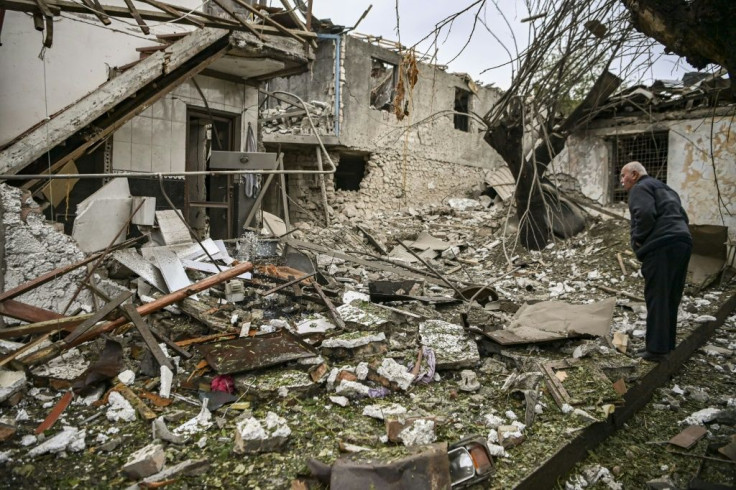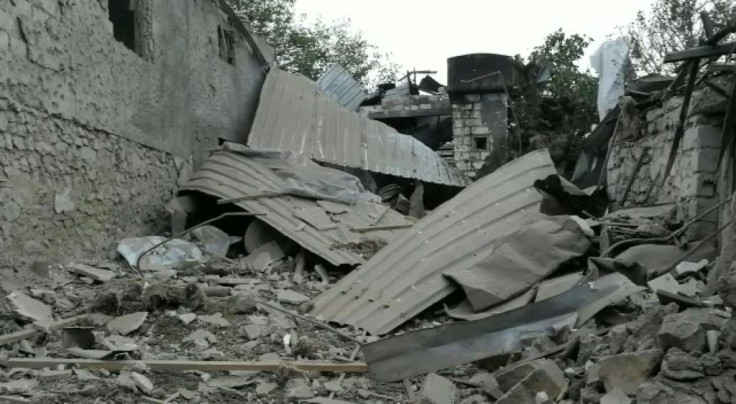Smerch: Soviet-designed Tornado Wreaks Fear In Karabakh
"Smerch", meaning "Tornado" in Russian: the word is on everyone's lips in Stepanakert, the capital of the Armenian-controlled Azerbaijani region of Nagarno-Karabakh.
Stepanakert has been under sustained Azerbaijani bombardment since fighting flared between the two foes late last month, with Baku vowing there can be no compromise until it wins control of the territory.
Both sides have access to Soviet-era weapons but it is the USSR-designed Smerch multiple rocket launcher system that is causing the most concern in Stepanakert.

Overnight, at least three houses next to each other were destroyed by a powerful explosion but there were no casualties.
"Only a Smerch rocket could have caused such damage," said local resident Albert Kafaian as he surveyed the damage to the surroundings.
A crater 4 to 5 meters (11 to 13.5 feet) wide was gorged in the middle of what was a small courtyard. Only the walls, reduced to rubble, of the two-storey concrete dwellings remain.

The overturned wreckage of a car -- all that was left of a garage -- lay at the foot of a tree. Fortunately, the owners had fled to Yerevan.
Another rocket landed in the garden of a house, leaving a roughly 10-metre crater in the ground. The sole victim appeared to be a dog whose gutted remains were lying nearby.
David Babaian, an advisor on foreign policy in the breakaway region, said Smerch attacks had taken place that night, in what he described as a "tactic of terror".

The salvos have started to follow a typical pattern: hourly fire in the night, possibly from the Smerch, then a respite in the morning.
The day brings drone attacks, with the familiar buzzing sound giving away the culprit.
Azerbaijan, for its part, has accused Armenian forces of shelling civilian targets in urban areas, including its second-largest city of Ganja.
The 300 mm Smerch rockets, fired from a multiple rocket launcher on the back of a truck, replaced in the 90s the more famous "Grad" BM-21 system.
These were the successors of the Katyusha rocket launcher system used with great success by the USSR in World War II with its ease of reloading making up for lack of accuracy.
It remains impossible to confirm with certainty the exact type of rockets being used, even if some 10 apparently unexploded rockets are cordoned off on the streets of the city, inviting the curiosity of journalists and locals.
The kind of arms being used are "weapons that cannot be precisely adjusted, super-powerful, intended to destroy anything that moves over large areas," prominent Russian military commentator and deputy editor of the online newspaper Ezhednevny Zhurnal, Alexander Goltz, told AFP.
The International Committee of the Red Cross at the weekend condemned "reported indiscriminate shelling and other alleged unlawful attacks", saying "scores" of civilians had already lost their lives.
© Copyright AFP 2024. All rights reserved.


















